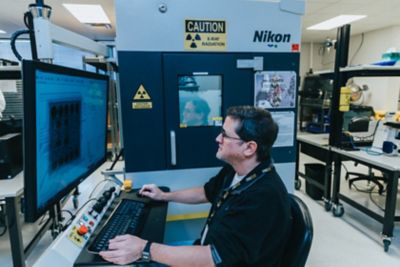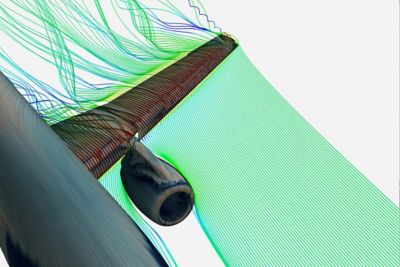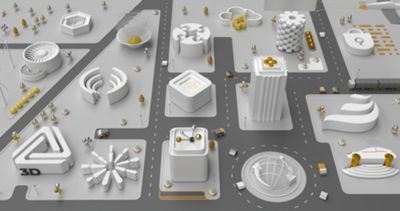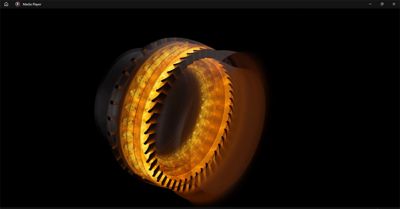-
United States -
United Kingdom -
India -
France -
Deutschland -
Italia -
日本 -
대한민국 -
中国 -
台灣
-
-
产品组合
查看所有产品Ansys致力于通过向学生提供免费的仿真工程软件来助力他们获得成功。
-

Ansys Fluent 2025 R1提供一系列令人印象深刻的新功能,包括面向燃烧、声学和自由表面流的GPU解决方案;在Fluent CPU求解器中,提高面向航空航天和电化学应用的求解器速度和准确性;提升了具有复杂装配体网格划分和设置的效率,GUI操作速度提高了3-500倍,总体设置时间加快了4-15倍。
欢迎在Ansys客户门户网站(Ansys Customer Portal)下载Ansys Fluent 2025 R1。
Fluent GPU求解器的扩展用例和新的许可证选项
在Ansys 2025 R1版本中,Ansys Fluent GPU求解器支持的新物理场包括:
- FGM(火焰面生成流形)模型,可为燃气轮机和其他燃烧应用提供准确高效的燃烧过程分析结果
- 气动声学,提供使用了Ffowcs Williams–Hawkings(FW-H)模型的混合GPU/CPU解决方案
- 面-面(S2S)辐射换热建模,为透明介质提供高效的辐射解决方案
- 利用离散相模型(DPM)进行的颗粒建模,包括蒸发颗粒的质量传递到气相
- 可压缩液体,用于对水锤等应用进行建模
- 自由表面流建模(β)的流体体积(VOF)方法
使用Ansys Fluent GPU求解器,在不到一天的时间内,就完成了对具有10亿个网格的飞机大涡仿真(LES)求解。
借助这些功能,新的用例能够受益于Fluent GPU求解器实现的大规模性能提升,包括燃气轮机燃烧、空气声学、电子冷却、混合过程分析等。
欢迎观看Fluent 2025 R1 GPU求解器网络研讨会点播视频,以了解更多信息。
2025 R1版本还提供了新的许可证类型。新的Ansys CFD HPC Ultimate许可证消除了HPC限制,允许用户在任意数量的CPU或GPU上运行Fluent,而无需额外的HPC许可证。如需了解此方案是否符合您的业务和设计需求,请联系Ansys销售人员。
Fluent GPU求解器加速性能基准测试
在提供的图表中,我们可以看到,与在CPU上求解相比,Fluent GPU求解器可以大幅缩短仿真求解时间。
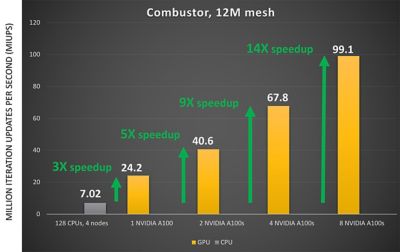
与CPU硬件相比,在8个NVIDIA A100上,使用FGM模型在Fluent GPU求解器上求解1200万个网格的燃烧室仿真时,速度提高了14倍。
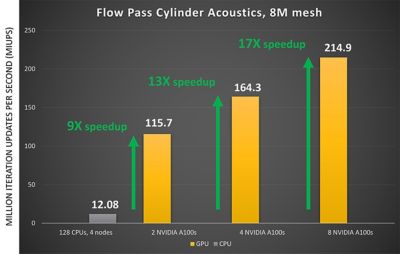
与CPU硬件相比,在8个NVIDIA A100上,使用FW-H模型在Fluent GPU求解器上求解800万个网格的声学仿真时,速度提高了17倍。
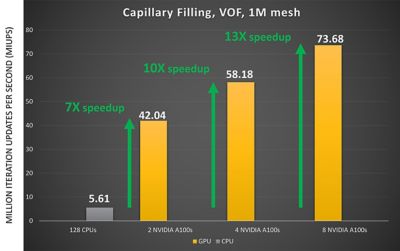
与CPU硬件相比,在8个NVIDIA A100上,使用VOF方法在Fluent GPU求解器上求解100万个网格的毛细力填充过程仿真时,速度提高了13倍。
借助Fluent 2025 R1 GPU求解器提供的新功能,您可以比使用传统CPU硬件时更快地运行仿真,并将更多时间用于分析结果和优化设计。在每次软件版本更新中,Fluent GPU求解器都会添加新功能。访问Ansys Fluent GPU求解器常见问题页面,以了解更多信息。
UI/UX增强功能
Fluent Web界面更新
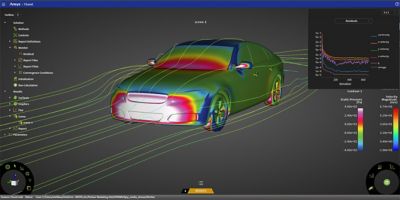
在2025 R1版本中,您现在可以在Fluent Web界面中进行网格划分、求解和后处理。
去年,Ansys发布了Fluent Web界面:这是一种通过Web浏览器远程访问Fluent软件的途径,支持用户在运行计算时进行实时更改。在2025 R1版本中,密闭几何网格划分(WTM)工作流程现已作为测试(β)版本在Fluent Web界面中提供,推动在单一用户界面内实现端到端工作流。
此外,Web服务器URL现在可以直接发送到您的电子邮件收件箱,以便于连接到服务器。当与同事共享Web服务器URL以进行协作时,也可以设置有限权限。另外,还提供了一些改善后处理体验的图形增强功能,包括颗粒轨迹支持、仿真过程中图形对象的自动刷新、解决方案动画播放等。
Fluent Desktop更新
对于Fluent Desktop界面,我们对复杂装配体的模型处理进行了显著的性能改进,以加快整体网格划分和设置时间。这尤其有利于具有数千个区域的应用,例如电池、燃料电池、整车模型等。现在,许多网格划分和设置操作的速度提高了几个数量级,其中包括,解决方案初始化和单元区域复制速度提升最高达5倍,物理模型设置处理速度提升最高达500倍,一对一网格交界面的自动配对速度提升最高达10倍。
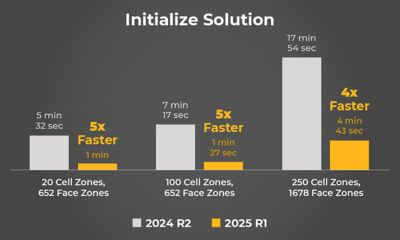
与2024 R2版本相比,Ansys 2025 R1的解决方案初始化速度实现了显著改进。
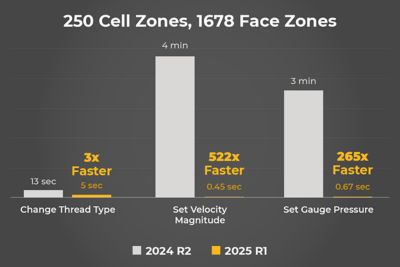
与2024 R2版本相比,Ansys 2025 R1的模型设置速度呈指数级增长。

非共节点网格交界面的一对一自动配对比之前的版本快6-10倍。
Fluent CPU求解器物理场更新
2025 R1版本中,实现了大量的物理场增强功能,可改进特定行业的应用工作流程。
电化学应用
电化学建模的增强功能,包括提升了锂离子电池模型求解器的稳健性,将每个时间步长所需的迭代次数从数百次大幅减少到约20次,从而将仿真运行速度提高了几个数量级。
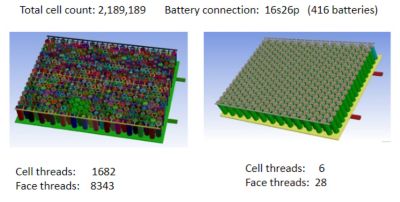
利用2025 R1版本的增强功能,显著减少了锂离子电池模型所需的时间步长数量。
基于变量的电池极耳连接现在取代了基于区域的连接,以缓解连接多个区域的瓶颈问题,从而实现更快的求解速度。
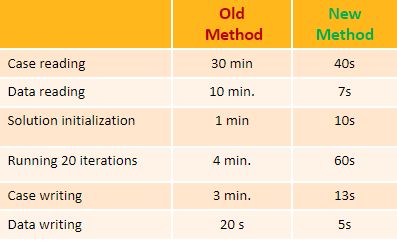
基于变量的连接取代了基于区域的连接,以改进案例和数据的读写,以及解决方案初始化和运行时间。
最后,还有电解建模最佳实践,能够提供稳健的工作流程和解决方案策略,可在此处访问相关最佳实践。
航空航天应用
航空航天应用增强功能适用于开展旋翼(如直升机或无人机)设计的用户,包括在使用虚拟叶片模型(VBM)求解之前自动创建转子盘区域(虚拟作用盘)。这样,可以显著缩短前处理时间,并支持在求解器中轻松重新定位转子。
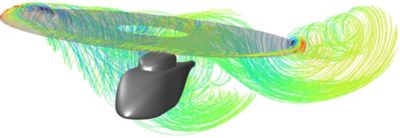
Fluent软件中的虚拟叶片模型(VBM)用作用盘取代了3D转子,其可通过控制方程中的隐式动量源项引入转子的影响。
Fluent Aero工作空间的更新包括网格自适应和参数搜索(β)工作流程,使用户能够重启并继续更新所有设计点的网格自适应或参数搜索周期,停止使用收敛标准的网格自适应或参数搜索周期,并对所有设计点的所有周期进行后处理。
网格划分加速增强功能
在2025 R1版本中,WTM工作流程实现了显著的任务性能加速改进。在具有复杂装配体的案例中,导入几何结构、更新表格、绘制区域图案等任务实现了3-350倍的速度提升。
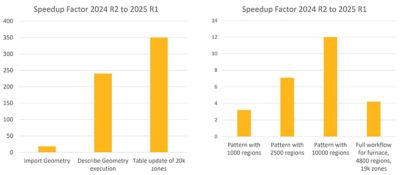
在2025 R1版本中,密闭几何网格划分工作流程实现了显著的加速。
容错几何网格划分(FTM)工作流程也实现了类似的任务性能加速改进。例如,对于具有超过200,000个部件的案例,特定任务的性能最高提升达32倍,整个工作流程的性能提高了8倍。从文件加载到任务切换和拖放,均实现了显著的加速改进,从而能够缩短整体工作流程时间并提高生产力。
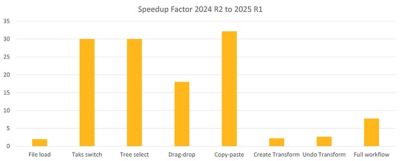
容错几何网格划分(FTM)工作流程中,具有200,000个部件的案例的任务性能改进
在哪里可以了解更多信息?
如需了解有关Ansys Fluent 2025 R1版本软件更新的更多信息,您可以:
Advantage博客
Ansys Advantage博客(The Advantage Blog)由Ansys专家和其他技术专家撰写,让您随时了解Ansys如何为创新赋能,推动人类踏上伟大征程。






